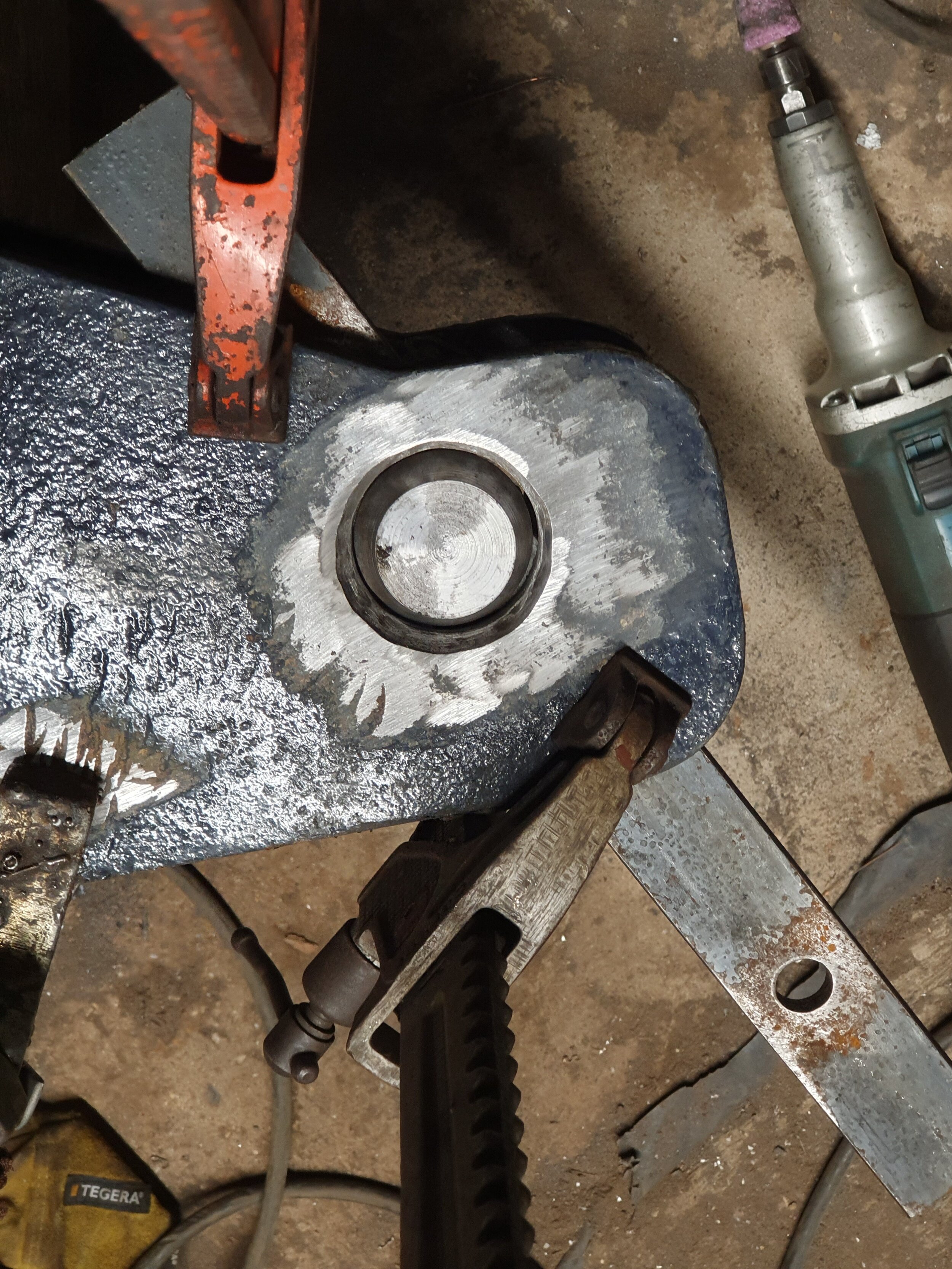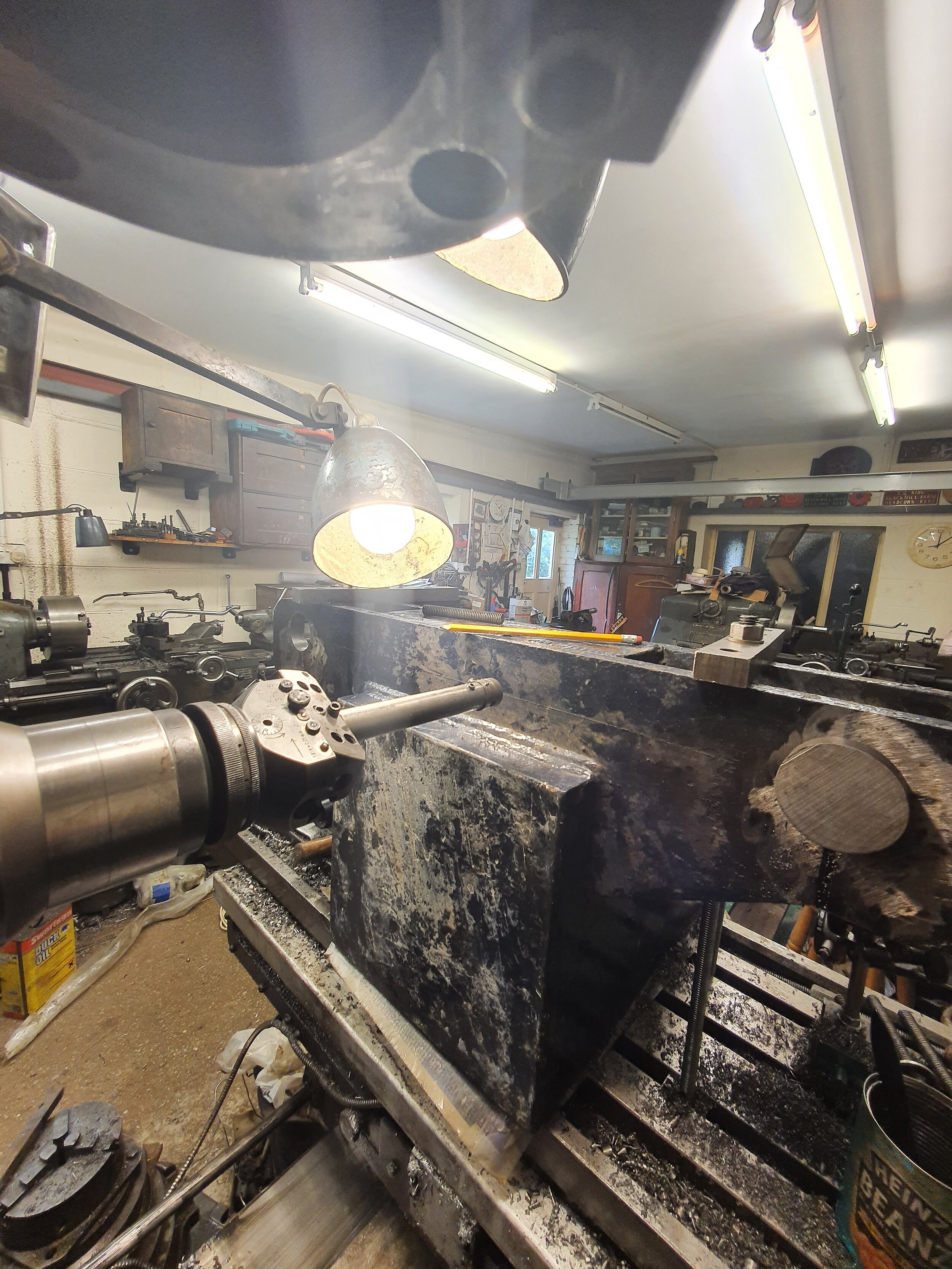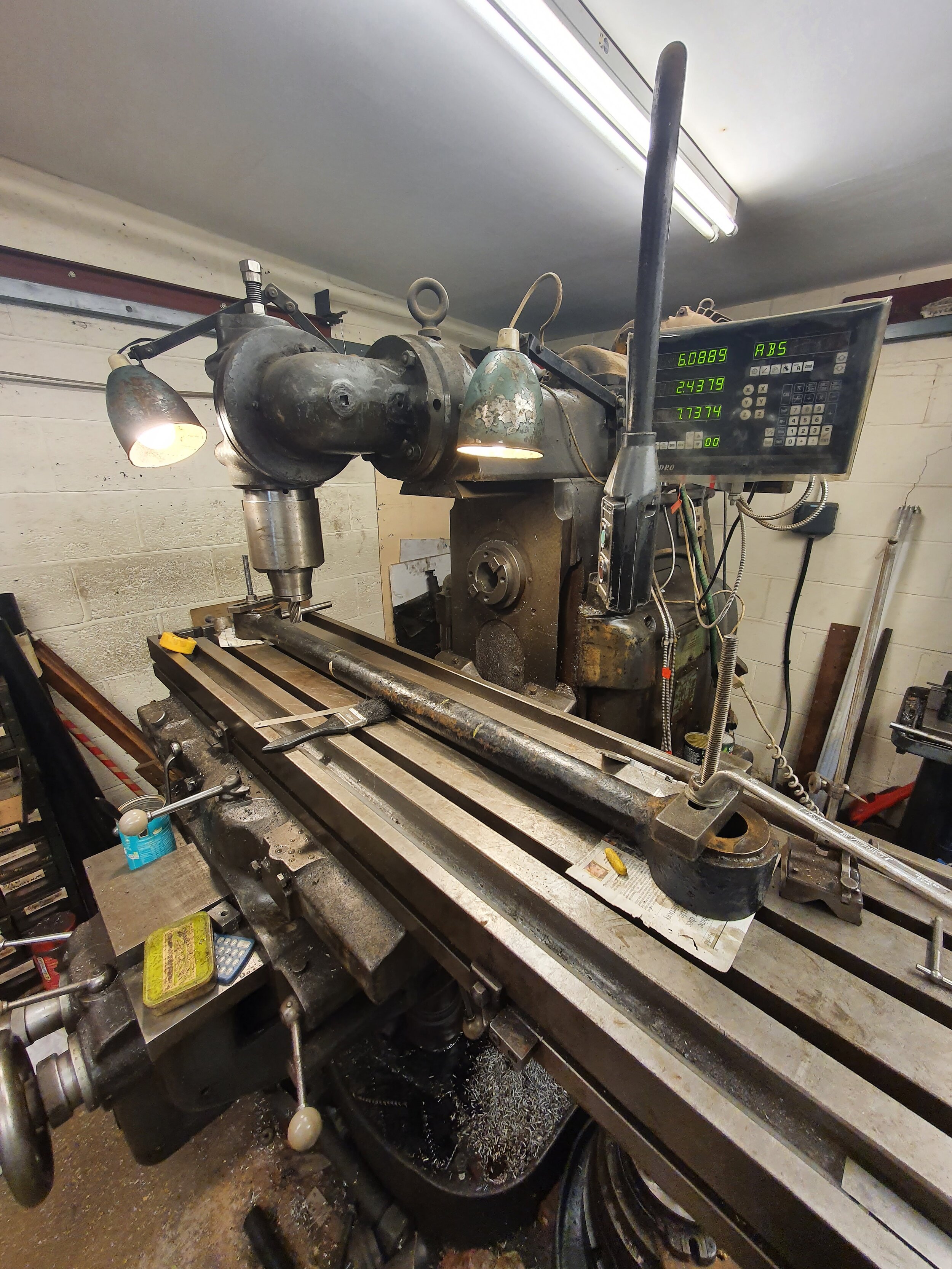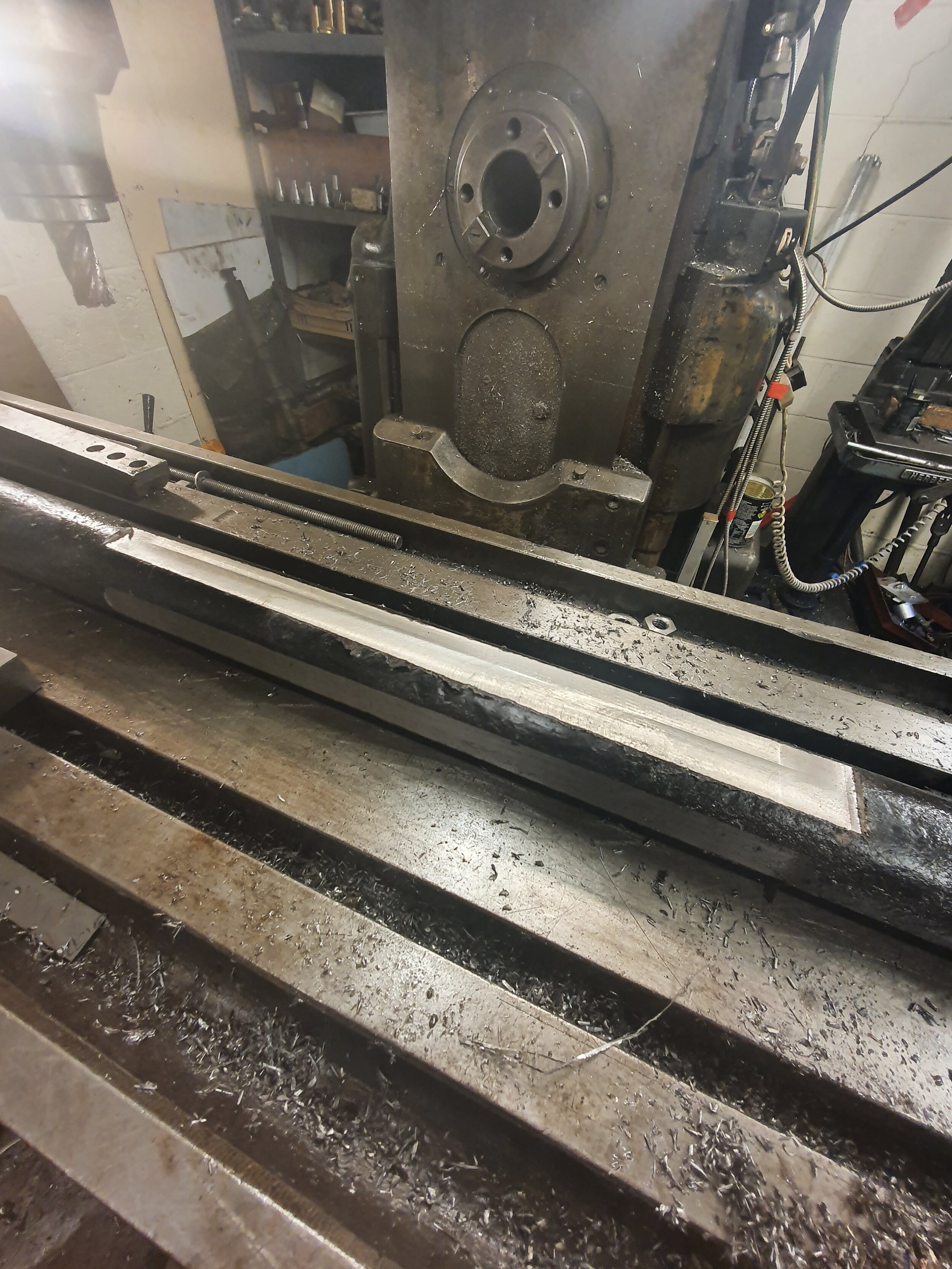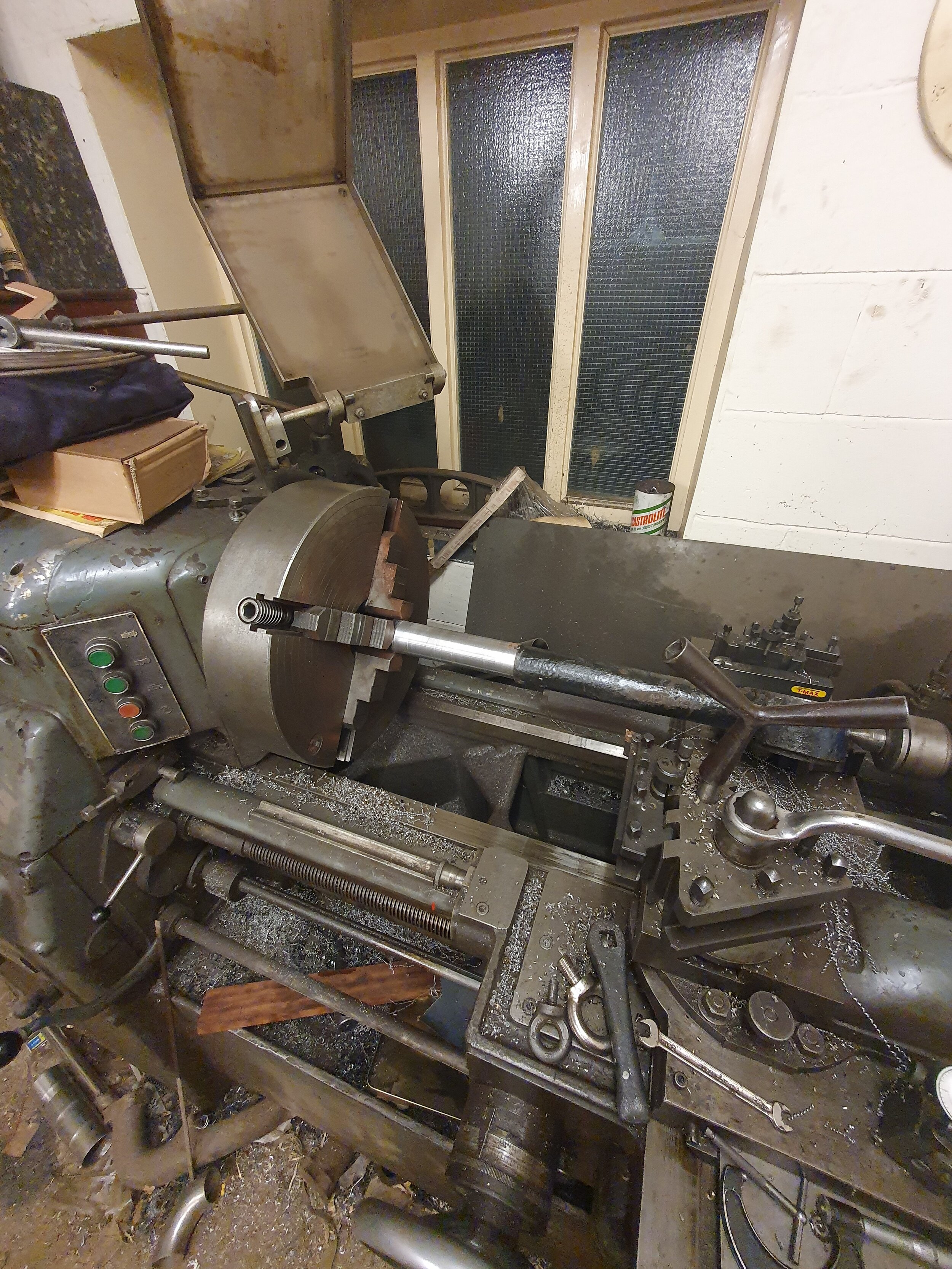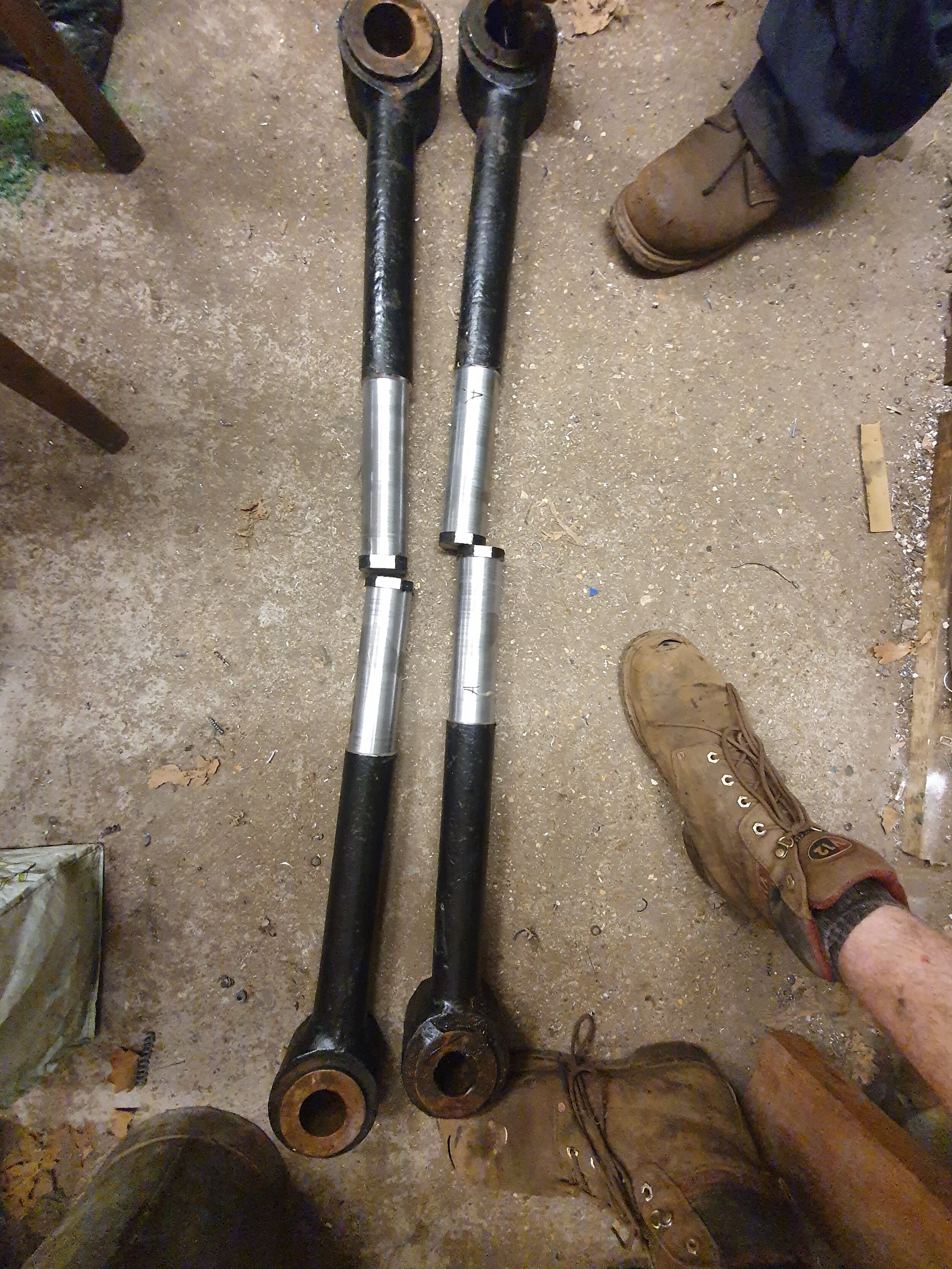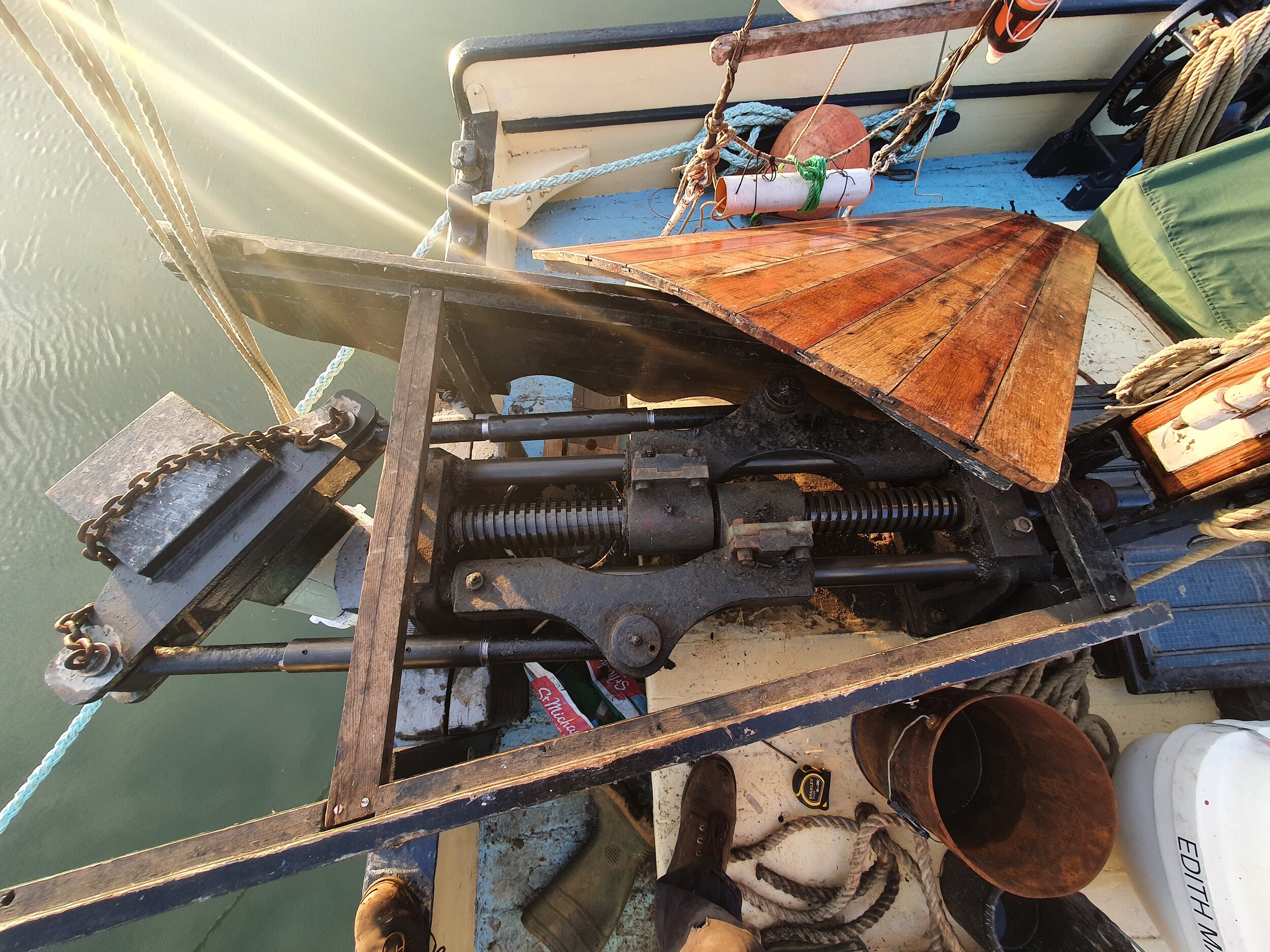Edith May Steering Gear rebuild
Some major repair work on the sailing barge Edith May- the barge, which recently received a extensive overhaul, including a new rudder, was having trouble steering. The steering would bind and jam at several points through the rudder’s arc, making it- if nothing else- really hard work to control.
We found the issue was a result of the new rudder being notably more solid than the old one- where the old rudder had a huge split right down the main post, the rudder cap, which links the steering arms to the wooden rudder, could waggle about just enough that the arms didn’t bind up. The new rudder prevented any movement in the cap, and so all the pivot points were fixed in place- as it turns out, the wrong place. Because the link arm pivots were in the wrong place relative to the rudder pivot, the link arms were travelling through 2 different length arcs throughout the rudder’s swing- causing the leadscrew which controls them to bind. So, we removed the rudder cap, welded up the old holes in the cap, and bored some new ones in the right place. Obviously, this meant the link arms would now need to be a different length- as it turns out, roughly 2 inches shorter.
Generally, in this situation we would have cut the 2.5” diameter shafts, pruned 2” out the middle, ground a big prep round them and welded them together. However, in this case welding was not an option- the shafts are made of wrought iron, notoriously hard to arc weld successfully. So, we concluded that the way forward would be to machine the middle 14” of the shaft to a known diameter, cut the 2” from the middle, and then fit a sleeve over either end, with several rivets through to hold it all in place.
This in itself presented another problem. Ideally, to set the shafts up in the lathe, you would put one end clean through the headstock, holding the middle of the shaft in the chuck. For us, this was not an option- neither we nor any of our usual subcontractors had a lathe big enough to fit one of the large eyes through the headstock. So, we came up with the idea to mill 4 flats on each shaft-then, when the shafts were cut in two, we would have a known reference from which to clock up in the lathe. This worked perfectly, and we machined the shafts, cut them to length and made the sleeves- each with 4 grub screws. We also made a new pair of pins to fit the freshly remachined rudder cap.
These grub screws allowed us to do a test fit(which had to be done at 5am in order to catch the tide), setting the newly machined cap, link arms and pins up together to set the link arms at their ideal length before we finally riveted them solid. This setup is currently working on the barge, which can be seen up and down the River Medway on a fairly regular basis. Find out more about the Edith May here, and visit our Instagram to see more pictures and a few time-lapse videos of the machining work.

